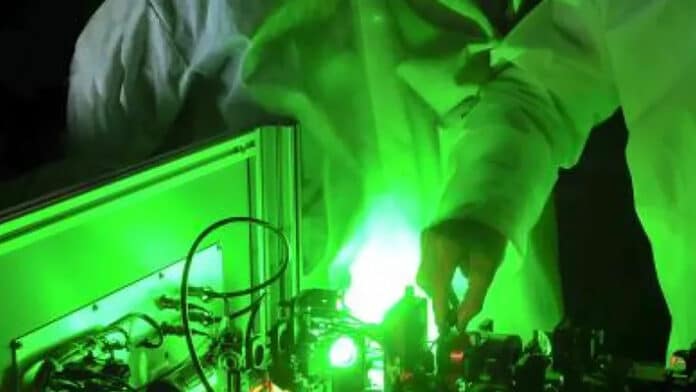Lasers have been in use for more than 60 years, but their potential is still largely untapped. There are incredible possibilities for lasers in healthcare, industry, and even the energy sector, but their energy efficiency needs to be improved further. Thales and other leaders in the field are working hard to develop more efficient lasers.
In 2012, The French technology company Thales provided the Berkeley Laboratory in California with a laser accelerator known as BELLA (Berkeley Lab Laser Accelerator). It was the first laser to deliver a petawatt of power, the equivalent of one million billion watts, by focusing all of its energy into a pulse that lasted for around thirty femtoseconds.
Six years later, Gérard Mourou, who is a research partner of Thales and a scientific advisor at École Polytechnique, was awarded the Nobel Prize in Physics for his work on chirped pulse amplification, which creates ultra-short, high-intensity laser pulses.
Thales also developed an ultra-powerful laser for the Extreme Light Infrastructure for Nuclear Physics (ELI-NP) European research project at Bucharest, Romania. This laser generated its first pulses in 2019 at a peak power level of 10 petawatts. It is currently the most powerful laser in the world and will help the scientific community better understand the physics of materials.
A state-of-the-art building valued at 320 million euros ($350 million) has been established by Thales with the support of the European Union for scientific advancement in Romania. This building houses exceptional performance, and according to Thales, it is Romania’s biggest investment in scientific advancement to date.
High-power lasers have diverse medical applications, including precise cancer treatment through proton or electron beam therapy and utilizing the “flash” effect for less harmful yet effective treatment. They also can also be used in X-ray imaging and to produce isotopic tracers for medical scanning applications.
In industry, laser-based X-rays are used to detect sub-millimeter defects in thick components and for cargo scanning to identify hazardous or illegal substances inside containers. These high-power lasers hold great promise in revolutionizing the energy sector.
“Nuclear fusion offers hopes of delivering clean, safe, waste-free energy, and it is now clear that short-pulse, very high-power lasers will play a key role in future energy plans,” said Christophe Simon-Boisson, product line manager for scientific and industrial lasers at Thales.
“These kinds of power lasers have lots of other applications, such as treating radioactive waste and cleaning up space debris,” continues Christophe Simon-Boisson. “The technologies have huge potential, but to fully exploit this potential we have to significantly improve the energy efficiency of the high-intensity lasers themselves. This is what we are doing now, for example with the XCAN demonstrator project conceived by Nobel Prize-winner Gérard Mourou at the Ecole polytechnique in partnership with Thales.”
Moreover, these lasers could be used to clean up space debris or even treat nuclear waste. The laser will be a dominant technology in the 21st century, just as the electron was in the previous one.
